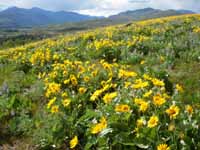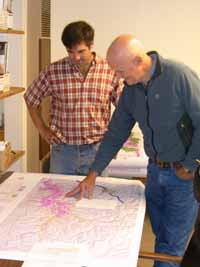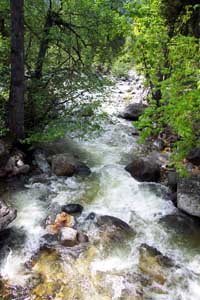Assessing Conservation Opportunities and
Conservation Planning
We believe that conservation decisions based on a scientific assessment of conservation opportunities achieve maximum impact. Science-based conservation decision-making can make a huge difference in maximizing the success of our conservation partners. This is especially important when financial and human resources are scarce – which is usually the case.
Conservation actions are often dominated by reactive rather than proactive approaches:
- Reacting to an immediate or future threat: (e.g. an environmental group reacts to a mining proposal, a logging operation, or an imminent development threat)
- Reacting to an chance opportunity: (e.g. a landowner approaches a land trust about a conservation easement, a parcel of land is on the market).
These approaches continue to be valid and will probably remain the dominant form of conservation action. However, proactive conservation approaches may often optimize the limited resources that are available for conservation. The main problem with the reactive approach to conservation is that very high conservation value properties may not be identified fast enough for the limited resources that are available for conservation actions to be applied to their protection. The highest conservation value properties often fall through the cracks. Unless the highest conservation opportunity properties are identified early, conservation organizations and public agencies may not have the resources left to enable their protection.
To achieve greatest success with the limited resources available for conservation, it is desirable to identify the highest conservation value areas using a systematic, objective approach, in advance of expenditure of significant resources. Early identification of the areas in most deserving and most in need of protection can maximize biodiversity protection, recreational opportunities and ecosystem services. It will ensure the most “bang” for the conservation “buck”. Scientific, spatially explicit analysis can identify these “very important places” (VIP) and help plan the best network of public and private protected areas.
When conservation funding is limited, the development of systematic, objective conservation priorities becomes more important. It will help ensure that those dwindling resources are spent on the conservation actions that will protect the most areas with the highest biodiversity and value to people, rather than exhausting those resources in a more random fashion using the classic reactionary approach. Establishment of a robust and meaningful set of conservation priorities does take some time and resources to accomplish, but the rewards will soon greatly outpace the expenditures.
Pacific Biodiversity Institute offers conservation organizations and public agencies assistance with proactive, science-based assessment of conservation opportunities through implementation of a time-proven, objective, and scientifically credible process. This process is driven by objective data about the physical, biological, social and political dimensions of the landscape of concern, be it a watershed, a state, a region or a larger geographic unit. We have experience in the establishment of conservation priorities in small watersheds and at state-wide spatial scales. Also, important in the process is the integration of the many viewpoints that various stakeholders have about what attributes of a potential conservation property are most important. There are no “right answers” in the establishment of conservation priorities. Pacific Biodiversity Institute specializes in the development of decision support systems that can incorporate the priorities of various stakeholders and then return results in an iterative fashion. This can allow the selection of a suite of properties of highest conservation value to a diverse group of stakeholders, as well as allowing each stakeholder to view their own set of highest conservation value parcels.
You can learn more about our work in assessing conservation opportunities on our publications page.
Copyright © Pacific Biodiversity Institute



